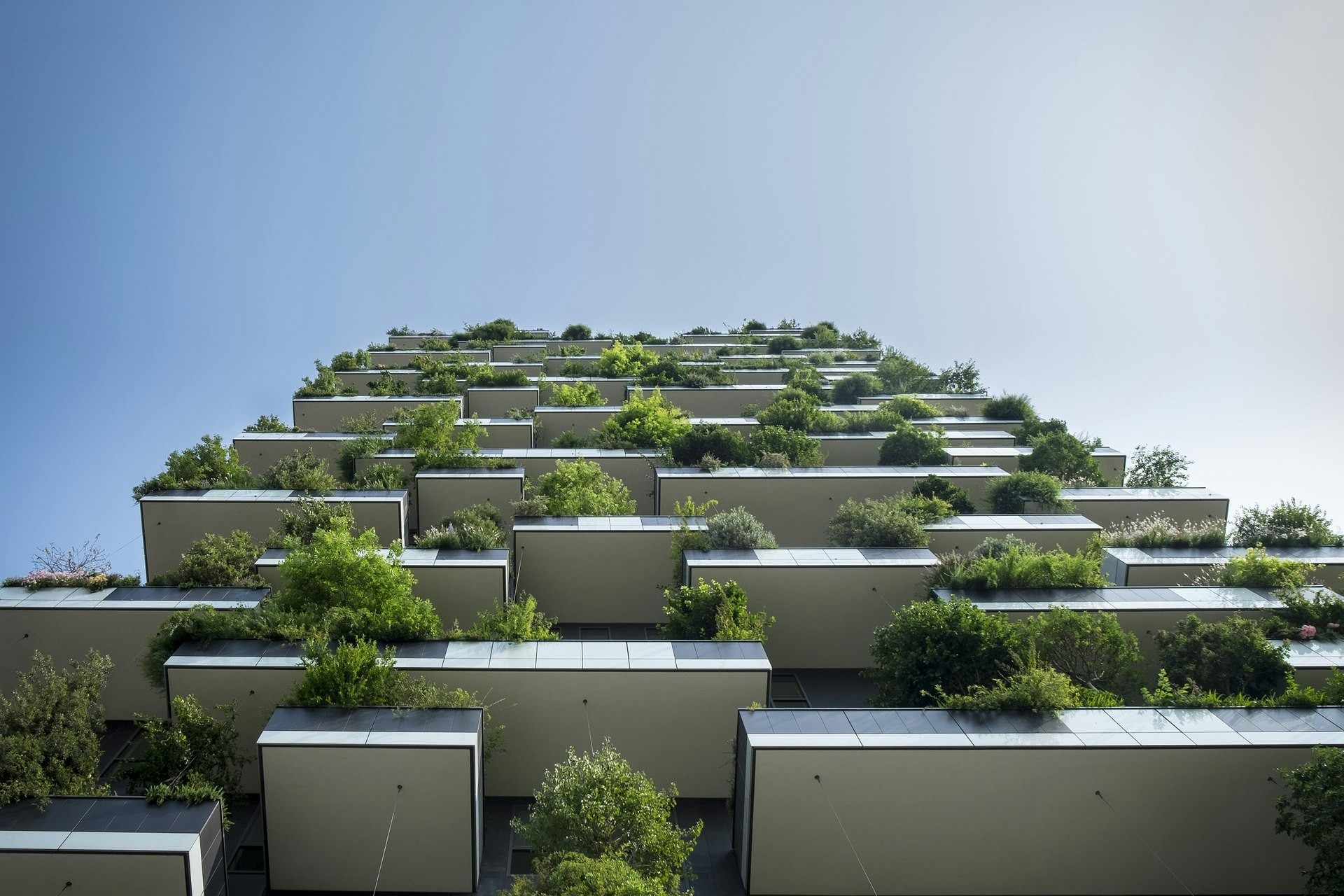Build Sustainable Buildings
Although today we use building technologies that help conserve resources, such as insulation and glazed windows, current methods do not necessarily sustain natural resources.
Methods to create high-performance, sustainable buildings:
Evaluate sites for their unique characteristics. Situate buildings to benefit from solar radiation and existing vegetation. Protect trees, plants, and topsoil during site work. Grade and develop building sites to retain and filter storm water.
Design durable structures that have the potential to be adapted for future reuse.

Design buildings for energy conservation and efficiency. Consider the climate in which structures will be built. Install high efficiency electrical lighting and heating/cooling. Incorporate the use of free natural light. Include daylighting techniques, such as skylights that reflect light down into a room and track the movement of the sun. Include the use of passive solar techniques to capture heat in a thermal mass, such as a concrete wall. Green buildings are less expensive to heat, cool, and light.

Build with renewable energy systems, such as solar photovoltaics (PV) roof panels or shingles that convert sunlight into electricity.
Design areas for recycling and easy waste handling and disposal.
Choose durable and "environmentally friendly" products, materials, and appliances.
"Green" building materials are environmentally less damaging than their alternatives. Definitions of what constitutes green materials vary but include certified wood, by-products such as straw bales (for insulation), locally produced or salvaged materials, products made from recycled materials, and materials derived from the earth, such as adobe. Avoid potential health hazards such as certain kinds of pressure-treated lumber and materials that generate pollutants.
Certified wood comes from sustainably managed forests. In a sustainable community, a tree is planted to replace every one that is harvested for construction.
If you are planning to purchase a new home, consider selecting a builder or developer that incorporates Smart Growth community design and green building materials.

